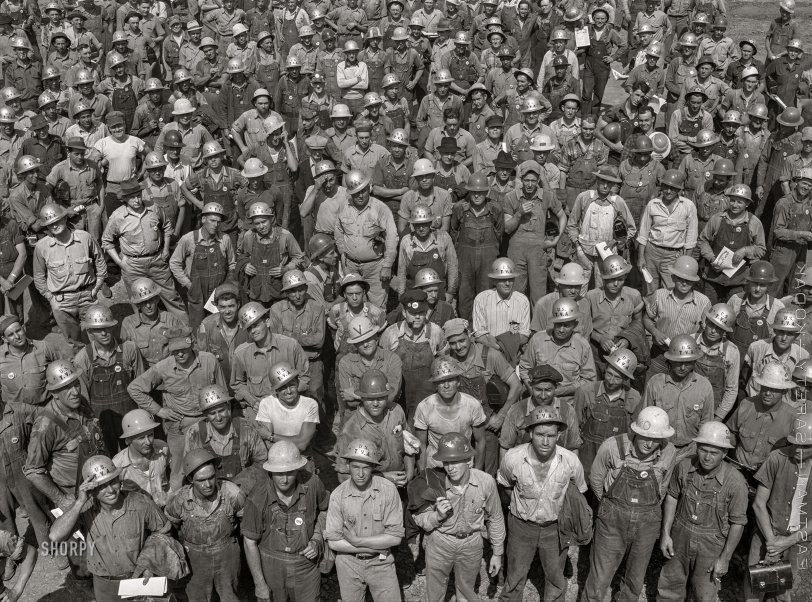


Framed or unframed, desk size to sofa size, printed by us in Arizona and Alabama since 2007. Explore now.
Shorpy is funded by you. Patreon contributors get an ad-free experience.
Learn more.

- Roll your own
- Rugged and real!
- A Charles Purcell - Mama Cass Connection
- Uncle SAAM
- Obfuscation
- One Chocolate Soldier rode away
- Victor Marquis de la Roche
- The Little House Across Way ...
- Vanderbilt Gates
- Vanderbilt Mansion
- You can still see that gate
- Withering heights for me
- So Jim,
- Top Heavy
- Re: Can't Place It.
- Bus ID
- Since you mention it
- The White Pages ?
- Moonlight Tower
- 1907?
- Fire(men) and Water
- Can't Place It
- Can anyone
- Wings
- Where's Claudette and Clark?
- Overbuilt Rolodex
- One song
- Give Me Wings Please!
- PRR
- Pinball Wizards
Printporium
U.S. T.V.A.: 1942

June 1942. "Construction of Fort Loudoun Dam, a Tennessee Valley Authority project on the Tennessee River. Some of the 1,300 men who work the 7 a.m. to 3 p.m. shift." Acetate negative by Arthur Rothstein for the U.S. Foreign Information Service. View full size.
Who reads 'Fort Loudoun Dam Safety News'?
Apparently, most of the men in this photo do. Curiously, the dam is named after an 18th century British colonial fort, about 10 miles away, which was named after a British Earl. I suspect our allegiance with England, who was at war, had something to do with that.
There are many handsome men in this crowd, but I'm going to nominate front row, fourth from the right to the handsome rake gallery.
Here is their finished product:
Someone is Missing from the Photo
I looked hard and can't find a single Black face in the crowd. But I found lots of historical information online:
"A committee of Negro citizens making investigations in the interest of their race claimed to have discovered that only two Negroes were employed by the TVA in the whole section of twelve counties around Norris. Thus it did seem that there had been no use for the few Negroes who had registered to have gone to that trouble."
"The TVA claimed that building separate dormitories and accommodations for the few Negro laborers representing the small Negro population around Norris would be so expensive as to materially advance the price of the electric power to be sold by the TVA."
Excerpts from "The TVA and the Race Problem" (1934) by Cranston Clayton. See: https://socialwelfare.library.vcu.edu/eras/great-depression/tva-race-pro...
What we immediately notice today
A sea of white faces.
And this did not go unnoticed at the time, or earlier. Cranston Clayton, identified as "a white Southerner," wrote a hard-hitting article in 1934, "The TVA and the Race Problem." Its impact was likely limited because it appeared in 'Opportunity, Journal of Negro Life'.
























On Shorpy:
Today’s Top 5